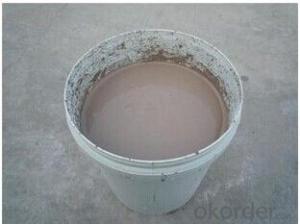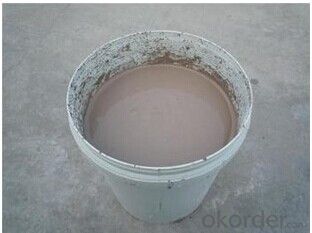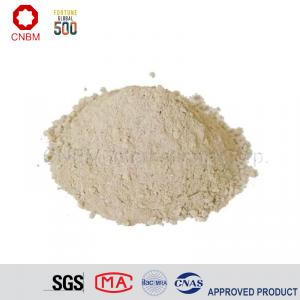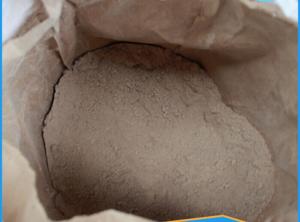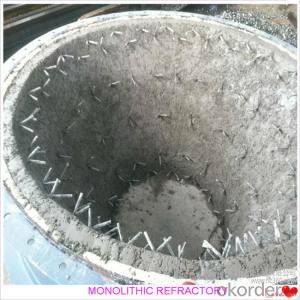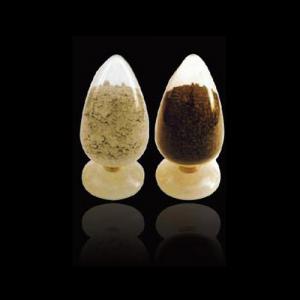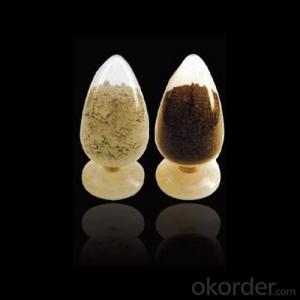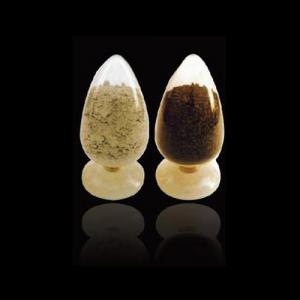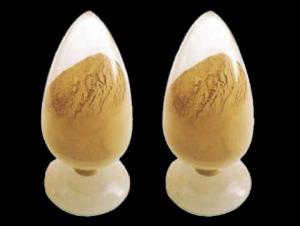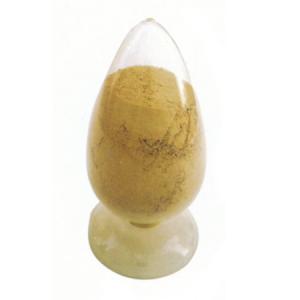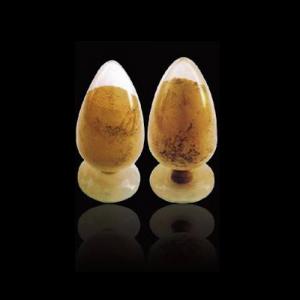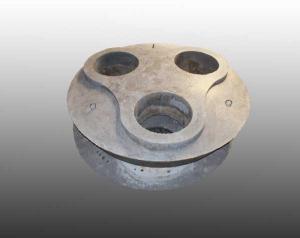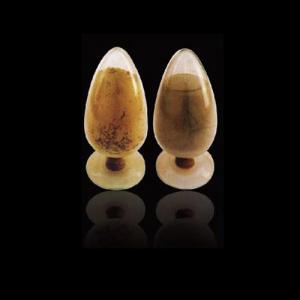Monolithic Refractories High-Temperature Bonder Cement for Iron and Steel Industry
- Loading Port:
- China Main Port
- Payment Terms:
- TT OR LC
- Min Order Qty:
- -
- Supply Capability:
- -
OKorder Service Pledge
OKorder Financial Service
You Might Also Like
TY-AZS33
Shapes and sizes: there are great variety of formats and shapes which are available for different forming and special machine processes.
Application: mainly used for working ends, feeder channel, side walls, superstructures, crowns, sidewalls, tank bottoms, C-shaped brick and doghouse crown.etc.
TY- AZS36
Shapes and sizes: This product is only available for straight brick.
Application:mainly used for side walls of flame furnaces with embedded melter bottoms, for total security with average pulls and campaign lengths, and superstructures, front wall, back wall, top crown in glass melting furnace.
TY- AZS41
Shapes and sizes: this product is available in a large size straight or approximate bricks and special formats and shapes which are available for special machining processes.
Application: Mainly used for sidewalls, doghouses, throat, bottom budding, Dam blocks, electric block corners.
Item | Behaviors | |||
TY-AZS33 | TY-AZS36 | TY-AZS41 | ||
Chemical Composition | Al2O3 | ≥50.00 | ≥49.00 | ≥45.00 |
ZrO2 | ≥32.50 | ≥35.50 | ≥40.50 | |
SiO2 | ≤15.50 | ≤13.50 | ≤13.00 | |
Na2O+K2O | ≤1.30 | ≤1.35 | ≤1.30 | |
Bulk density g/cm3 | ≥3.75 | ≥3.85 | ≥4.00 | |
Apparent Porosity % | ≤1.2 | ≤1.0 | ≤1.2 | |
Cold Crushing Strength Mpa | ≥300 | ≥300 | ≥300 | |
Exudation Temperature of Glass Phase | ≥1400 | ≥1400 | ≥1410 | |
Bubble Separation Ratio(1300°C×10h) | ≤1.5 | ≤1.4 | ≤1.0 | |
Anti-corrosion rate of glass liquid 1500°C×36h (mm/24h)% | ≤1.45 | ≤1.3 | ≤1.2 | |
Apparent density (g/cm3) | PT(RN RC N) | ≥3.45 | ≥3.50 | ≥3.70 |
ZWS(RR EVF EC ENC) | ≥3.60 | ≥3.70 | ≥3.90 | |
WS( RT VF EPIC FVP DCL) | ≥3.70 | ≥3.80 | ≥4.00 | |
- Q: How do monolithic refractories protect lining in ladles and tundishes?
- Monolithic refractories protect lining in ladles and tundishes by forming a strong and durable barrier against the harsh conditions of high temperatures, thermal shock, and chemical corrosion. They are designed to withstand the extreme heat and mechanical stresses that occur during metal pouring and handling, ensuring the integrity and longevity of the lining. Additionally, monolithic refractories provide excellent insulation properties, reducing heat loss and conserving energy in the ladles and tundishes.
- Q: How are monolithic refractories different from traditional brick refractories?
- Monolithic refractories differ from traditional brick refractories in terms of their composition and application method. While traditional brick refractories are made from individual bricks that are shaped and arranged to form a structure, monolithic refractories are a single, seamless material that is applied in a liquid or semi-liquid form and then cured or dried to form a solid mass. This allows monolithic refractories to be more versatile in terms of application, as they can be easily poured, sprayed, or troweled into complex shapes and installations. Additionally, monolithic refractories often offer better thermal insulation, higher resistance to thermal shock, and improved mechanical strength compared to traditional brick refractories.
- Q: What are the common failure mechanisms of monolithic refractories in the iron and steel industry?
- Some common failure mechanisms of monolithic refractories in the iron and steel industry include thermal spalling, erosion, chemical attack, and mechanical damage. Thermal spalling occurs due to rapid temperature changes, causing the refractory material to crack and break. Erosion occurs when hot gases or molten metal wear away the refractory lining. Chemical attack refers to the corrosive action of slag or other chemicals on the refractory material. Mechanical damage may occur due to physical impacts or stresses, leading to cracks and fractures in the refractory lining.
- Q: How do monolithic refractories perform in aluminum holding furnace applications?
- The use of monolithic refractories in aluminum holding furnace applications has been proven to be highly efficient and effective. These refractories are designed specifically to withstand the extreme temperatures and chemical environments found in these furnaces. One major advantage of monolithic refractories is their ability to create a continuous and seamless lining in the furnace. This eliminates the need for individual bricks or tiles, reducing the risk of thermal shock and cracking. The absence of joints also minimizes the likelihood of molten aluminum leaking through the lining, ensuring better containment and heat retention. Monolithic refractories also provide excellent thermal insulation properties, which are essential in aluminum holding furnaces. They have low thermal conductivity, helping to reduce heat loss and maintain a stable temperature within the furnace. This leads to improved energy efficiency and lower operating costs. Furthermore, monolithic refractories have exceptional resistance to corrosion and chemical attack from molten aluminum and its by-products, such as dross and fluxes. This resistance ensures a longer lifespan for the refractory lining, reducing the need for maintenance and downtime. In addition, monolithic refractories are known for their easy installation and repair. They can be installed quickly and easily, requiring minimal downtime for furnace maintenance. If any localized damage or wear occurs, repairs can be efficiently made by patching or spraying the affected area. In conclusion, monolithic refractories are an excellent choice for aluminum holding furnace applications due to their seamless lining, thermal insulation properties, resistance to corrosion, and easy installation and repair. These refractories significantly enhance the overall performance and efficiency of aluminum holding furnaces.
- Q: How do monolithic refractories impact the quality and performance of iron and steel products?
- The quality and performance of iron and steel products rely heavily on monolithic refractories. These refractories are designed to withstand extreme temperatures and harsh conditions, making them indispensable in the iron and steel industry. To begin with, monolithic refractories contribute to the overall quality of iron and steel products by providing exceptional thermal insulation. They help maintain a consistent and controlled temperature during the manufacturing process, which is especially crucial in blast furnaces where temperatures can reach up to 2,000 degrees Celsius. By effectively insulating the furnace walls, monolithic refractories minimize heat loss and ensure efficient energy utilization. As a result, the products have higher quality and improved mechanical properties. Additionally, monolithic refractories offer superior resistance to chemical and physical wear. In the steelmaking process, the molten metal and slag can be highly corrosive, leading to erosion and deterioration of the refractory lining. However, monolithic refractories are engineered to withstand such aggressive environments, providing excellent resistance to chemical attack and mechanical stress. By preserving the integrity of the lining, they prevent contamination and extend the lifespan of the furnace or ladle, ultimately enhancing the quality of the final iron and steel products. Moreover, monolithic refractories allow for greater design flexibility and ease of installation. Unlike traditional refractory bricks that require precise placement and fitting, monolithic refractories can be applied as a single, cohesive material. This enables the creation of more intricate shapes and structures, optimizing furnace design and enhancing thermal efficiency. Additionally, the ease of installation reduces downtime during maintenance and repairs, ensuring uninterrupted production and minimizing disruptions to the manufacturing process. In conclusion, monolithic refractories have a significant impact on the quality and performance of iron and steel products. They provide exceptional thermal insulation, resist chemical and physical wear, and offer greater design flexibility. By maintaining consistent temperature environments, preventing contamination, and enabling efficient production processes, monolithic refractories contribute to the production of high-quality iron and steel products that meet the rigorous demands of various industries.
- Q: What are the different types of monolithic refractories used in the iron and steel industry?
- The iron and steel industry relies on various types of monolithic refractories for their exceptional thermal resistance, strength, and durability. These refractories are crucial in withstanding extreme temperatures and harsh conditions in a range of applications. Firstly, there are castables, which are precast refractory materials that form a slurry when mixed with water. This slurry is then poured or cast into molds. Castables are widely used in the iron and steel industry to line ladles, tundishes, and furnaces due to their high strength and resistance to thermal shock. Another type is ramming mass, which is used to line induction furnaces and melting units. It is composed of refractory aggregates, binders, and additives. Ramming mass is applied by ramming or tamping it into place, creating a dense lining capable of withstanding high temperatures and chemical attacks. Gunning mix is a refractory material applied using a pneumatic gunning machine. It is particularly useful for repairing or lining various areas of furnaces, especially during hot repairs. Gunning mix consists of refractory aggregates, binders, and additives that are sprayed onto the lining surface and then compacted. Plastic refractories, on the other hand, are mixtures of refractory aggregates and binders with high plasticity. They can be easily molded or shaped, making them ideal for repairing or patching refractory linings in the iron and steel industry. Plastic refractories are typically applied by hand or with a trowel and are suitable for both hot and cold applications. Lastly, refractory mortars are used for jointing or repairing refractory bricks or other monolithic refractories. They are composed of refractory powders, binders, and water. Mortars provide excellent adhesion between bricks or monolithic materials, ensuring a strong and durable lining in furnaces, ladles, and other high-temperature equipment. These various types of monolithic refractories are indispensable in the iron and steel industry. They provide reliable and long-lasting linings, ensuring efficient operations and minimizing downtime.
- Q: How do monolithic refractories enhance the performance of ladle and tundish covers?
- Monolithic refractories play a crucial role in enhancing the performance of ladle and tundish covers in several ways. Firstly, monolithic refractories offer excellent thermal insulation properties. Ladles and tundishes are exposed to extremely high temperatures during the steelmaking process. By using monolithic refractories, the covers can effectively trap and retain heat, preventing excessive heat loss. This insulation capability not only helps to maintain the desired temperature of the molten steel but also reduces the energy consumption required for heating. Secondly, monolithic refractories provide superior resistance to thermal shock. When ladles and tundishes are filled with molten steel, there is a rapid and drastic temperature change in the refractory lining. This thermal shock can cause cracking and spalling of the lining, compromising its integrity. However, monolithic refractories possess high thermal shock resistance, allowing them to withstand these sudden temperature fluctuations without significant damage. This ensures the longevity and durability of the ladle and tundish covers. Furthermore, monolithic refractories exhibit excellent corrosion resistance. The molten steel and other aggressive chemicals present in the ladles and tundishes can erode the refractory lining over time. However, monolithic refractories are specifically designed to withstand these corrosive environments, protecting the covers from chemical attack and erosion. This resistance to corrosion enhances the lifespan of the ladle and tundish covers, reducing the need for frequent replacements and associated downtime. Additionally, monolithic refractories offer good mechanical strength and stability. The ladles and tundishes undergo various mechanical stresses, including the weight of the molten steel, thermal expansions, and vibrations. The use of monolithic refractories provides the necessary strength and stability to withstand these mechanical forces, preventing structural failures and maintaining the integrity of the covers. In summary, monolithic refractories enhance the performance of ladle and tundish covers by providing excellent thermal insulation, resistance to thermal shock and corrosion, and sufficient mechanical strength. These properties ensure efficient steelmaking processes, reduce maintenance costs, and prolong the lifespan of ladles and tundishes.
- Q: What are the common applications of monolithic refractories in blast furnaces?
- Monolithic refractories, also known as unshaped refractories, are widely used in blast furnaces due to their advantageous properties and versatile applications. Some common applications of monolithic refractories in blast furnaces include: 1. Furnace lining: Monolithic refractories are used to line the walls, hearth, and roof of blast furnaces. Their high thermal resistance and superior insulating properties help protect the furnace structure from extreme temperatures and thermal shocks. 2. Tuyere and taphole repair: Blast furnaces have tuyeres, which are nozzles that inject air or fuel into the furnace, and tapholes, which are openings used to tap molten iron or slag. Monolithic refractories are used to repair and maintain these critical components, as they can withstand the high temperatures and chemical reactions occurring in these areas. 3. Hot repair and maintenance: Blast furnaces undergo frequent repairs and maintenance due to the harsh operating conditions. Monolithic refractories are used for hot repair and maintenance, as they can be easily applied in a plastic or semi-plastic state to fill cracks, patch damaged areas, or replace worn-out linings. 4. Erosion and corrosion resistance: Blast furnace environments are highly corrosive due to the presence of molten iron, slag, and other molten materials. Monolithic refractories with high resistance to erosion and corrosion are used to protect the furnace lining from chemical attacks and prolong its lifespan. 5. Gunning mixes: Gunning mixes are widely used in blast furnaces for their ability to be sprayed or gunned onto the refractory lining. These mixes consist of fine refractory aggregates, bonding agents, and additives. They are applied to repair worn-out areas, seal cracks, and provide a protective layer against erosion and slag penetration. 6. Slag line and iron runner repair: The slag line and iron runners in blast furnaces are prone to erosion and wear due to the corrosive nature of molten slag and iron. Monolithic refractories are used to repair and rebuild these areas, ensuring smooth and efficient operation of the furnace. In conclusion, monolithic refractories have various applications in blast furnaces, including furnace lining, tuyere and taphole repair, hot repair and maintenance, erosion and corrosion resistance, gunning mixes, and slag line and iron runner repair. Their ability to withstand high temperatures, chemical attacks, and mechanical stresses make them indispensable in maintaining the integrity and efficiency of blast furnace operations.
- Q: What are the advantages of using monolithic refractories in the iron and steel industry?
- Using monolithic refractories in the iron and steel industry offers several advantages. Firstly, they have excellent thermal insulation properties, allowing them to withstand and retain high temperatures. This is crucial in the manufacturing process as it ensures structural integrity, reduces the risk of failure, and maintains operational efficiency. Secondly, monolithic refractories have superior corrosion resistance. This protects equipment and structures from degradation caused by harsh chemicals and corrosive agents. It extends the lifespan of the refractories, reduces maintenance costs, and minimizes downtime. Another advantage is the versatility of monolithic refractories. Unlike traditional refractory bricks, they can be cast or sprayed into various shapes and sizes. This makes installation easier and allows for better lining design and improved performance. They can also be easily repaired or patched, minimizing production disruptions. Furthermore, monolithic refractories have excellent mechanical strength and abrasion resistance. This ensures they can withstand the constant movement and processing of materials in the industry without compromising performance. Lastly, using monolithic refractories can lead to cost savings. They require less labor and time for installation, resulting in reduced costs. Their longer lifespan, resistance to corrosion and thermal shock, also reduces the need for frequent replacements, minimizing maintenance and downtime costs. In conclusion, monolithic refractories offer advantages such as thermal insulation, corrosion resistance, versatility, mechanical strength, and cost savings. They are an ideal choice for lining furnaces, ladles, and other equipment used in the production of iron and steel.
- Q: What are the benefits of using monolithic refractories in the iron and steel industry?
- Using monolithic refractories in the iron and steel industry has several advantages. Firstly, they have excellent thermal shock resistance, meaning they can withstand extreme temperature changes without cracking or spalling. This is crucial in an industry where materials are exposed to high temperatures during processes such as melting, casting, and heat treatment. Secondly, monolithic refractories have superior corrosion resistance, making them highly durable against the corrosive effects of molten metals and slag. This is particularly important in the iron and steel industry, where materials come into contact with aggressive molten iron, steel, and various chemical compounds. Furthermore, monolithic refractories provide excellent mechanical strength and abrasion resistance. They can withstand mechanical stress, vibrations, and impacts commonly encountered in the iron and steel industry. This ensures a longer lifespan for the refractories, reduces downtime for repairs or replacements, and improves overall operational efficiency. Additionally, monolithic refractories offer ease of installation and repair. Unlike traditional refractory bricks that require complex and time-consuming masonry work, monolithic refractories can be quickly and easily installed using simple methods such as casting, gunning, or spraying. This saves time and labor costs during initial installation and subsequent maintenance or repairs. Moreover, monolithic refractories provide flexibility in design and application. They can be customized to specific shapes and sizes, allowing for tailored linings in different parts of the iron and steel manufacturing process. This versatility enhances the overall efficiency and effectiveness of refractory linings, optimizing production output and ensuring consistent quality of the finished iron and steel products. In conclusion, there are numerous benefits to using monolithic refractories in the iron and steel industry. They offer exceptional thermal shock resistance, corrosion resistance, mechanical strength, and abrasion resistance. They are also easy to install and repair, and their flexibility allows for customized designs. Overall, monolithic refractories contribute to improved productivity, reduced downtime, and enhanced product quality in the iron and steel industry.
Send your message to us
Monolithic Refractories High-Temperature Bonder Cement for Iron and Steel Industry
- Loading Port:
- China Main Port
- Payment Terms:
- TT OR LC
- Min Order Qty:
- -
- Supply Capability:
- -
OKorder Service Pledge
OKorder Financial Service
Similar products
Hot products
Hot Searches
Related keywords
